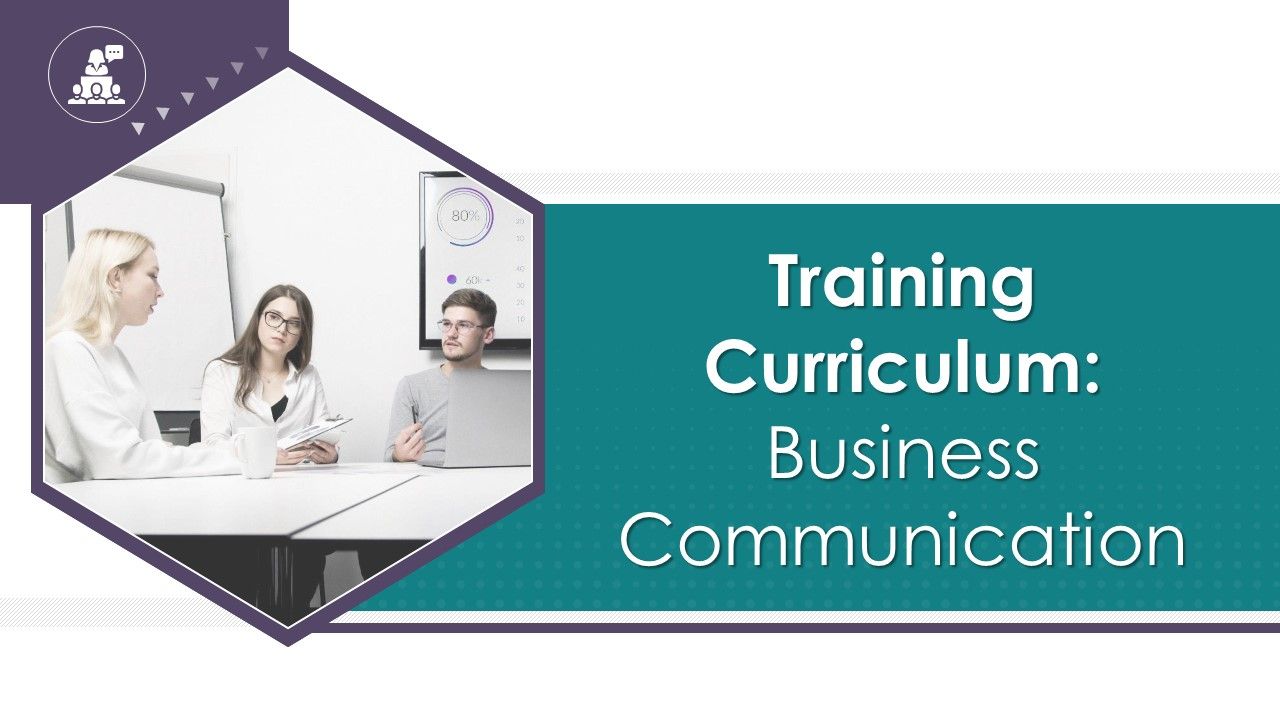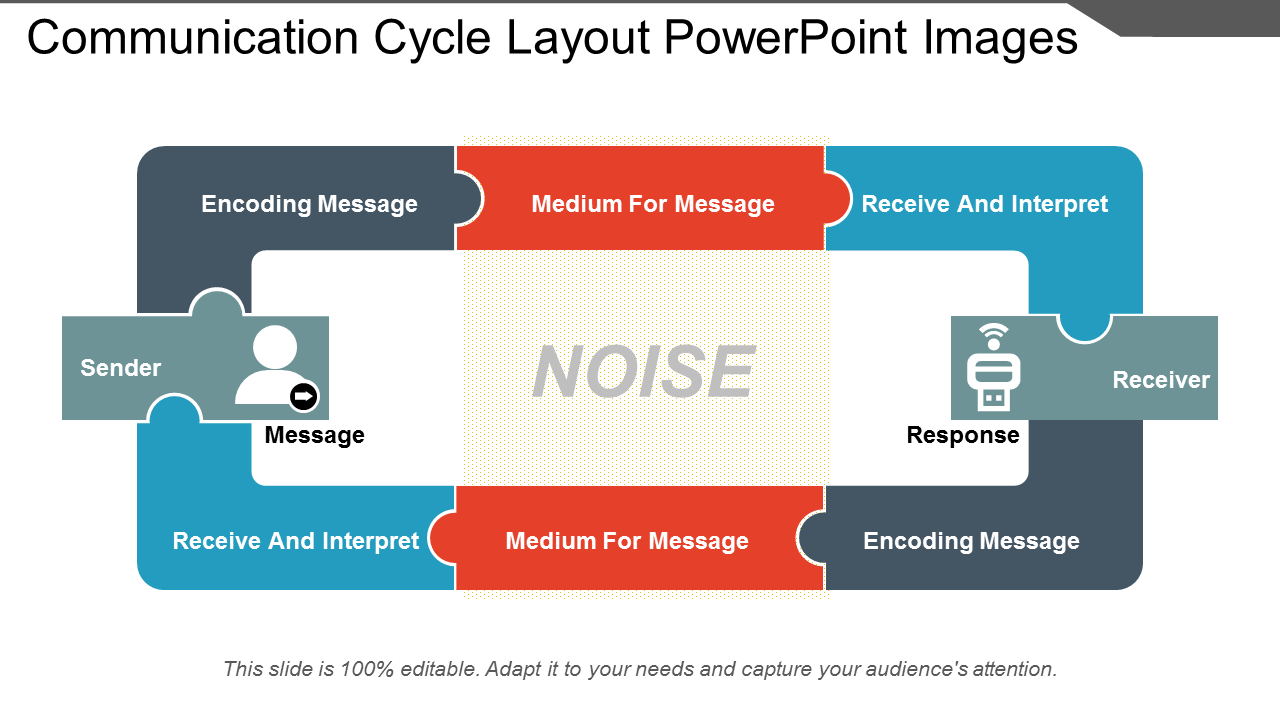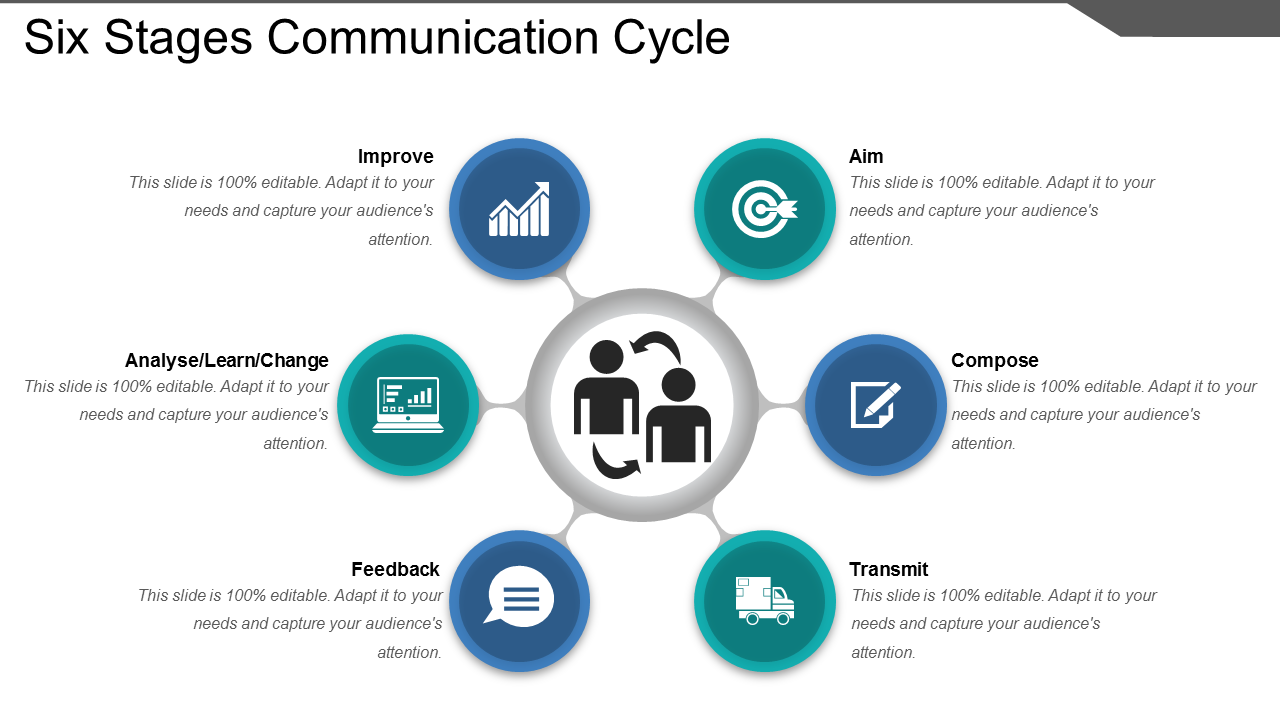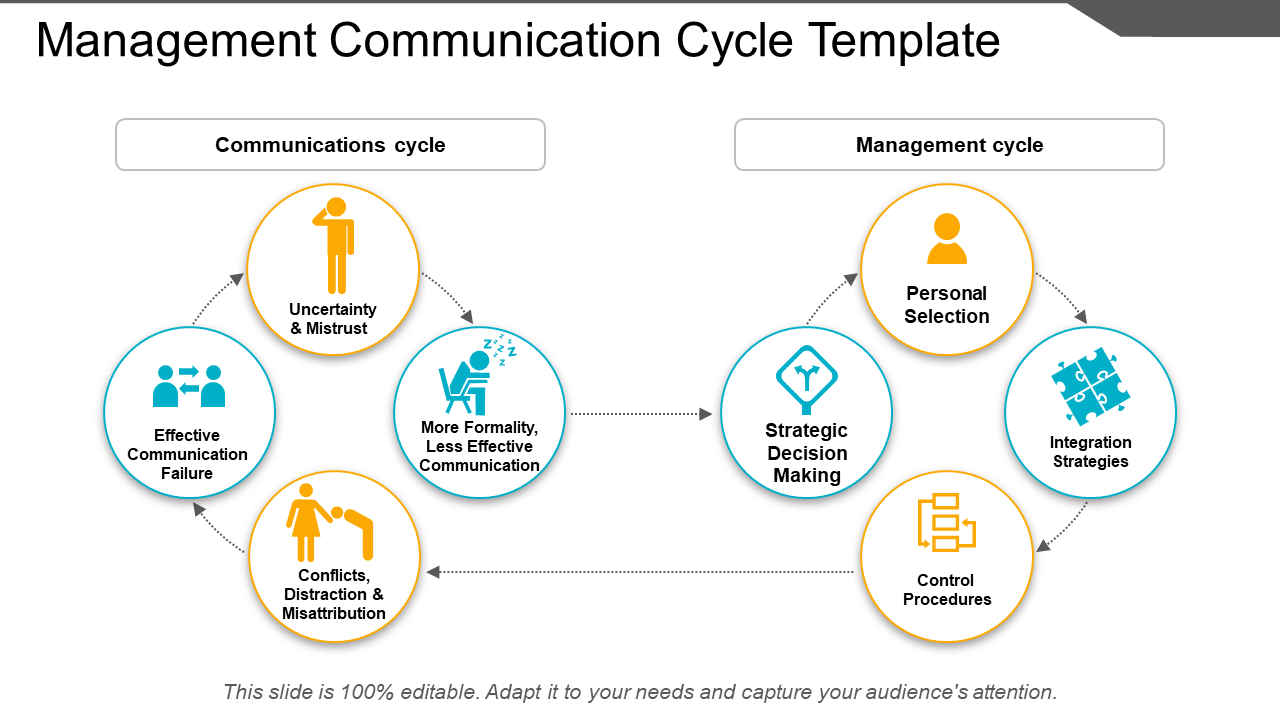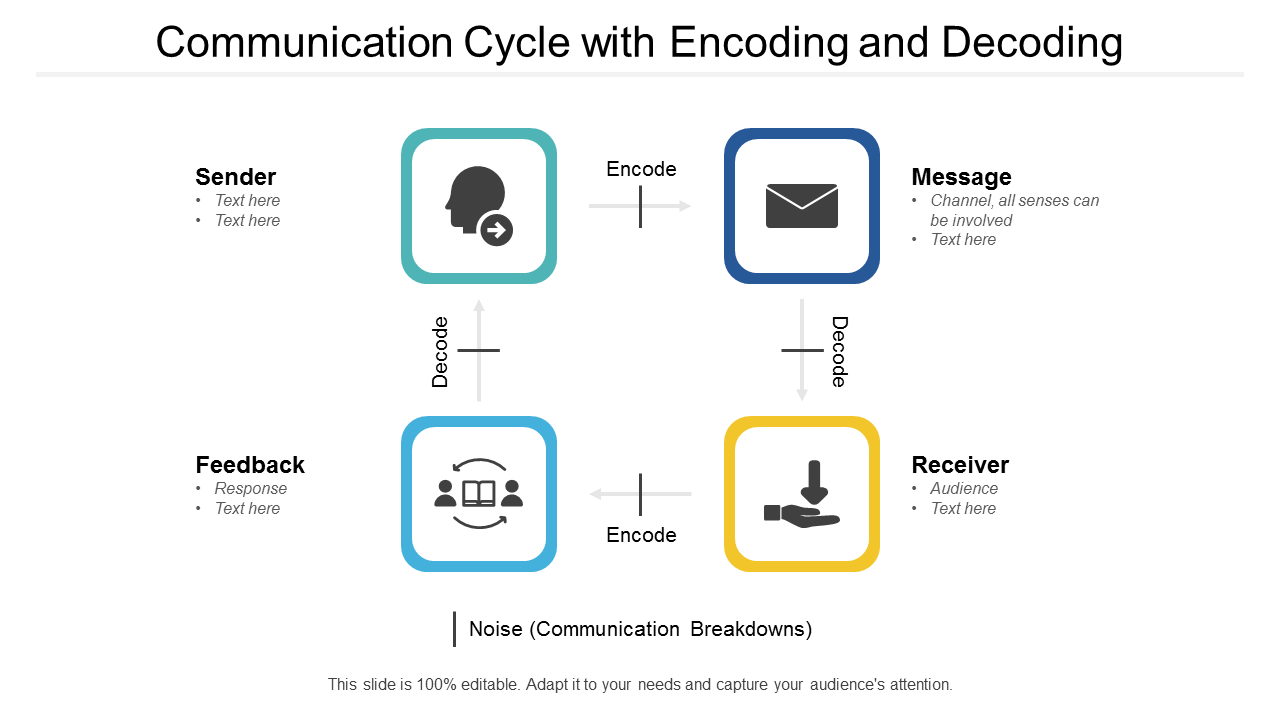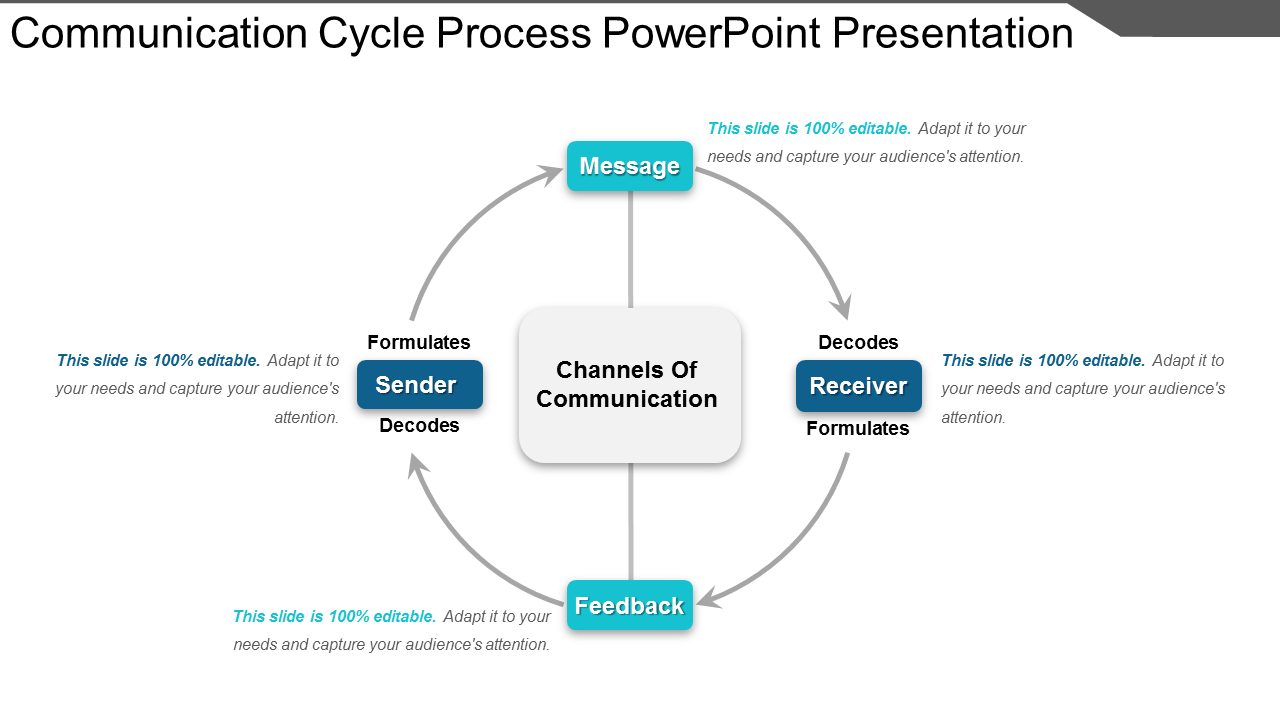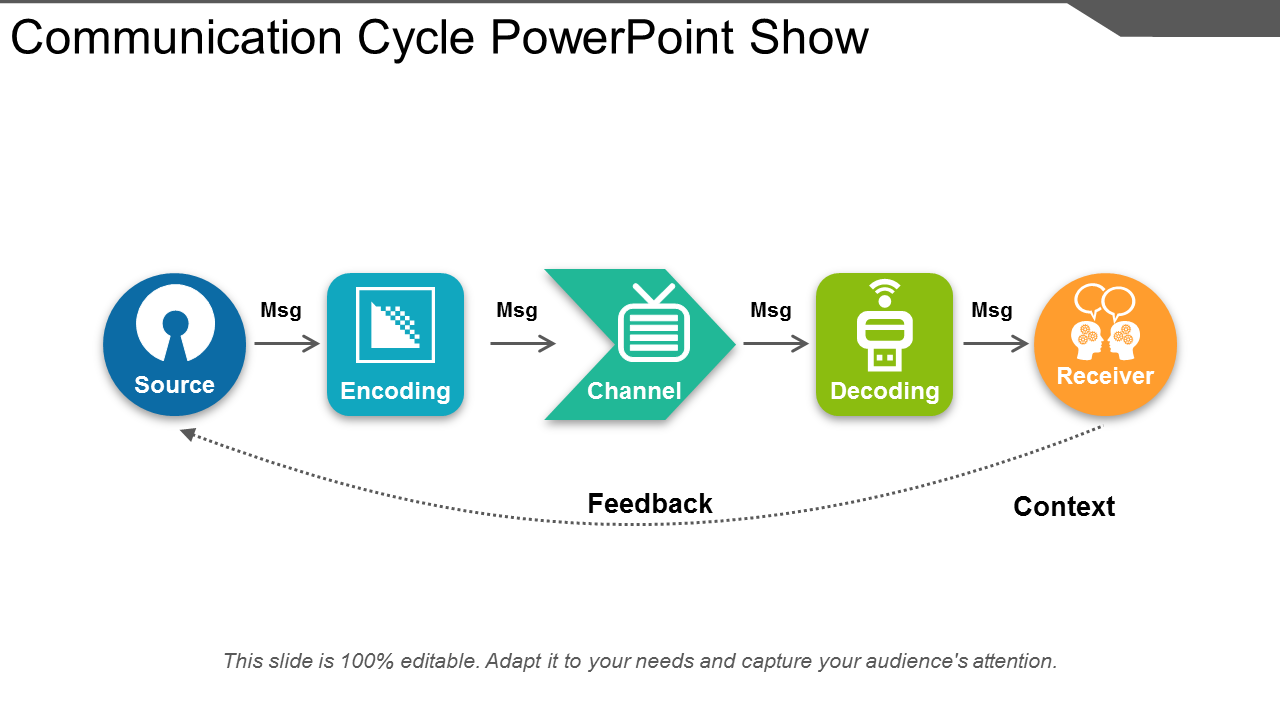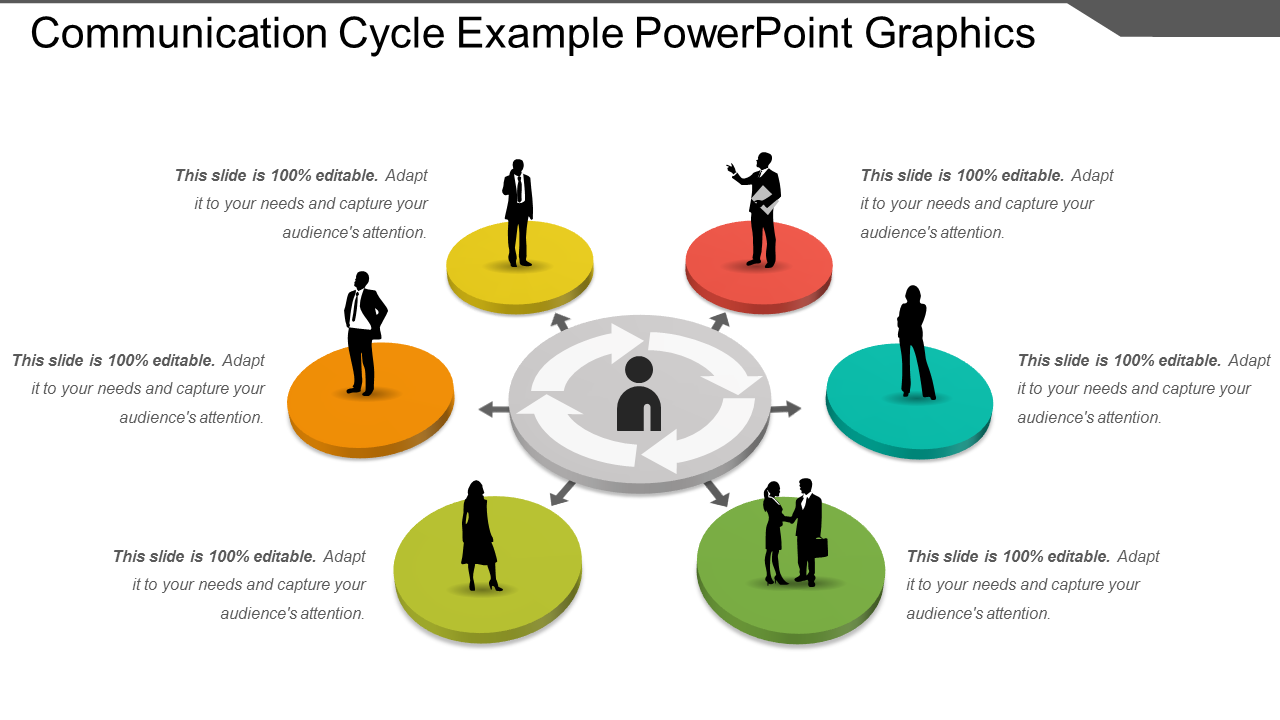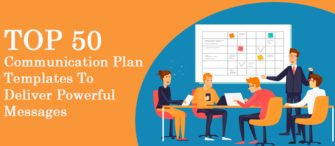There’s one general rule of thumb that every writer has to follow — keep it simple and direct.
Reason? Effective communication.
Would you ever read content with faulty construction of sentences and irrelevant messages?
An obvious no!
But here’s the thing, today’s fast-paced world with a growing tech footprint has rendered everyone (no matter the designation) to communicate in a certain way, i.e. digitally. Be it an executive trying to share his business plan or a manager talking to his team, they need a plan to make their intent clear while communicating.
Are you looking to conduct a training to educate your team or colleagues on effective business communication? Click here to access our Comprehensive Training Curriculum On Business Communication to ensure you are ready to hit the ground running!
Click here to access the Comprehensive Training Curriculum On Business Communication
It might sound simple. But if you’re not aware of all the steps in the communication process, malfunctioning is bound to happen at both personal and professional levels.
Therefore, this blog guides communicators on the fundamental elements and benefits of a communication cycle diagram while offering cherry-picked PowerPoint templates along the way. Read on and take your pick!
What is a communication cycle diagram?
A communication cycle diagram is a visual representation of the relay of information or messages between two or more entities. The diagram helps clearly define the roles and responsibilities of the sender and the receiver. The cycle sets up the path for a viable communication process by providing a closer look at the crucial components. These stable elements are sender, message, encoding, channel, receiver, decoding, and feedback.
Let’s look at the current scenario for more clarity. Due to the ongoing pandemic, children are supposed to attend classes online. And every parent, as well as teacher, is worried about the lack of learning that has crept in.
So what’s the root cause?
Here’s the crux of it:
- Loss of internet connection (channel of communication)
- Lack of attention, e.g. children playing games or watching television simultaneously (receiver’s detachment)
- No coordination between the teacher (sender) and the students (receiver).
- Emotional barriers (absence of required gestures, body movements, tone, pitch, pauses, facial expressions, etc)
This is where having a well-defined communication cycle can help! So let’s learn about its components in detail.
Communication cycle stages
In a piece of well-oiled machinery, every part has its own function. It’s almost impossible to skip any stage for effective communication. Therefore, you have to go through them one by one to understand how the cycle functions.
#1 Sender
In a business meeting, the speaker or host is the sender. The sender initiates a conversation, encodes the message, and moves it forward via an appropriate channel. The host is responsible for putting across the intent of the meeting. Otherwise, it will be a time-wasting and unproductive conference for all parties involved.
#2 Message
The aim of conducting a meeting is the message here. It can be to discuss the sales data with your team or simply share a new marketing plan. The sender needs to lay out the data or program in a lucid manner.
#3 Channel
In the next stage, the sender must choose a relevant channel to package the message and convey it as it is. It can be verbal (over the telephone, face-to-face discussions, interviews, debates, and so on) or non-verbal (written, facial expressions, gestures, paralinguistics, etc) In a business setting, a PowerPoint presentation will be a suitable channel for communication.
#4 Noise
Language barriers or different conventions like tradition or culture can become static in the sender’s communication process. These barriers can lead to an incomplete communication cycle and failure to encode and decode properly.
#5 Receiver
It is now the receiver’s turn to act next. Heavily dependent on dialogues, a receiver is expected to carry appellative functions carefully. A receiver must decode the message to keep the conversation going.
#6 Feedback
Without feedback, the communication cycle cannot come to its fruition. Once the receiver has decoded the message, they must validate effective listening by responding accurately. It helps motivate, boost learning, improve performance, and encourage relationship building.
Templates to improve your interpersonal communication
John Powell, an English composer, rightly said, “Communication works for those who work at it.” You need to make conscious efforts to understand the communication cycle and its elements.
Therefore, to help you master the power that effective communication holds, we present our best 10 PowerPoint designs. Take your pick and learn the language of leadership now!
Template 1: Communication Cycle PowerPoint Presentation
Your organization cannot function without a smooth operating communication cycle. Therefore, we bring you this 12-slide complete deck designed explicitly to boost your team’s productivity. The PPT deck helps assess the distinct features of a successful communication system. Go ahead and download it now!
Template 2: Steps Involved in Communication Cycle Template
Your company’s profitability is directly proportional to the effectiveness of your team’s communication. So we present you this PowerPoint template to help you set guidelines for getting the desired inputs. You can download this completely customizable template and put it to use immediately. Click on the link now!
Template 3: Communication Cycle PPT Layout
Highlight the stages involved in an orderly communication cycle with the assistance of this PowerPoint template. You can pick this ready-to-use template to communicate your plans effectively. Click the link below!
Template 4 Six Stages Communication Cycle Template
Foster a healthy working environment in your enterprise by deploying this PowerPoint template. You can use this attractive yet informative template to generate team spirit in your workforce. Keep track of your team’s functionality by taking the aid of this PPT template. Download it now!
Template 5: Management Communication Cycle Template
Communication is the key to resolving conflicts and mistrusts that have arisen within organizations. With this management communication cycle template, conduct seamless working with respect to strategic decision making, selection of correct strategies, their integration, and procedure control. Connect this seamless operation to having an effective communication cycle in the first place as explained in thsi PPT Slide. Bring efficiency in your organization today by downloading this PPT Diagram right away!
Template 6: Communication Cycle with Encoding and Decoding Template
Transferring messages and feedback is an important part of communication. This template lays out the verbal and non-verbal systems of communication effortlessly. Just add your text or information in this adaptable PowerPoint template and get going. Click on the link below to begin!
Template 7: Communication Cycle Process Template
Share the four crucial elements of the communication process, namely sender, message, receiver, and feedback, by employing this content-ready PowerPoint template. Utilize this template to build a thorough communication strategy for your team. Grab it now!
Template 8: Communication Cycle PowerPoint Show
Illustrate how the sender encodes the message and how the receiver decodes it with the help of our innovative PPT template. Acquaint your audience with the communication process by downloading this content-specific PowerPoint template. Click on the link below to get going!
Template 9: Communication Cycle Example Template
You can talk about the importance of successful communication through this visually appealing PowerPoint template. We have curated this template after thorough research to meet your strategic requirements. You can access this design with just a click below!
Template 10: Communication Cycle Diagram Template
Guide your audience on how to communicate better using this readily available PowerPoint template. You can devise strategies to remove communication hurdles within your organization by taking advantage of our professionally designed template. Download it in just a few steps by clicking on the link below!
Communication is key — the most cliche phrase we’ve all heard and forgotten conveniently. It’s not until something malfunctions on the personal or social level that we look for solutions. A communication cycle diagram helps you be aware of the right time to communicate, understand the receiver’s position, learn about various distractions to avoid them, and finally, enjoy productive communication.
P.S: Learn how to formulate an effective communication plan to reach your end goals with the templates featured in this blog.
FAQs on Communication Cycle Diagram
What is the communication cycle diagram?
The communication cycle diagram is a model that illustrates the process of communication. It is a simple, yet useful, tool for understanding the basic elements involved in any communication exchange.
The communication cycle diagram typically consists of six elements:
- Sender: The person who initiates the message or communication.
- Message: The information or content that the sender wishes to communicate.
- Encoding: The process of converting the message into a form that can be transmitted through a communication channel, such as spoken language, written text, or visual media.
- Channel: The means by which the message is transmitted, such as face-to-face conversation, telephone, email, or social media.
- Decoding: The process by which the receiver interprets the message and assigns meaning to it.
- Receiver: The person who receives the message and responds to it.
After the message has been received, the communication cycle may continue with feedback, which is the response or reaction of the receiver to the message. Feedback can help the sender know if the message was received, understood, and interpreted as intended.
The communication cycle diagram is a helpful tool for understanding the different elements of communication, and how they relate to each other. It can be applied to any form of communication, from face-to-face conversations to mass media broadcasts.
What are the 5 cycles of communication?
There are different models or frameworks for the communication process, and therefore different ways to categorize its cycles. One possible way to describe the cycles of communication is:
- Idea generation: This is the stage where the sender comes up with the idea or message they want to communicate. This may involve thinking, brainstorming, researching, or gathering information.
- Encoding: Once the idea is clear, the sender needs to encode or translate it into a form that can be transmitted to the receiver. This may involve selecting the appropriate words, tone, body language, or media to convey the message effectively.
- Transmission: The encoded message is then transmitted or sent through a channel or medium, such as speech, writing, email, social media, or any other means of communication.
- Reception: The receiver receives the message through the chosen channel, and begins the process of decoding it. This may involve paying attention, processing the information, interpreting the meaning, and analyzing the context.
- Feedback: Once the receiver has decoded the message, they may provide feedback to the sender. Feedback can take different forms, such as verbal or nonverbal responses, questions, requests for clarification, or actions. Feedback is crucial for ensuring that the communication is effective, accurate, and meets the expectations of both parties.
These cycles of communication are interconnected and can happen simultaneously or in different orders, depending on the context, the participants, and the goals of communication. Understanding these cycles can help improve communication skills, avoid misunderstandings, and build stronger relationships.
Where is a communication cycle diagram useful?
A communication cycle diagram is a useful tool for understanding and analyzing the various stages and processes involved in communication. It can be helpful in several contexts, including:
- Business communication: By understanding the various stages of communication and potential barriers, businesses can identify areas for improvement and develop strategies to enhance communication effectiveness.
- Education: Communication cycle diagrams can be used in education settings to teach students about the basics of effective communication, including the importance of feedback, context, and clarity.
- Personal communication: By understanding the different stages of communication, individuals can become more aware of their communication patterns and develop strategies for more effective communication.
- Public speaking: By understanding the different stages of communication and the role of feedback, speakers can develop speeches that are clear, persuasive, and memorable.
Overall, a communication cycle diagram is a versatile and useful tool for anyone who wants to improve their communication skills and effectiveness in various contexts.


![[Updated 2023] Communication Cycle Diagram: Guide, Templates, and More](https://www.slideteam.net/wp/wp-content/uploads/2021/10/Communication-Cycle-Diagram-1-1013x441.jpg)


 Customer Reviews
Customer Reviews

